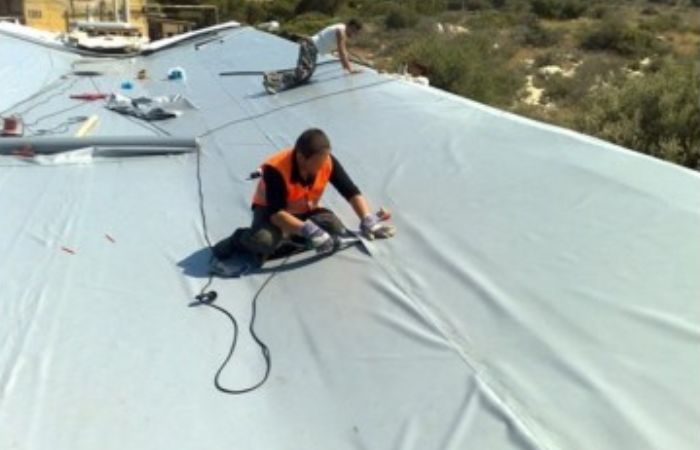
Waterproofing a roof with synthetic membranes, i.e. PCV membrane and TPO membrane is considered one of the best solutions for long-term results.
In the field (world) of special waterproofing constructions, PVC synthetic membranes have been widely used for quite a long time, as there is a wide range of waterproofing systems based on this polymeric membrane.
The way they are produced is by extrusion and, in addition to PVC which is the raw material, resins plasticizers, stabilizers, pigments and other additives are added to achieve the technical characteristics required to give each type of membrane.
They are produced with a signal layer, i.e. a double colouring on the upper and lower part of the film in order to allow the detection of any failure during the waterpoofing.
Their reinforcement may be of three types:
The sheets of the membranes are placed freely or mechanically fixed when its required, always overlapping by 10 cm. The welds of the seams of the coatings are made by welding the sheets mechanically using a hot air machine (LEISTER).
The method of heat welding is very little affected by weather conditions ensuring the success of waterproofing works with PVC membranes even under adverse weather conditions.